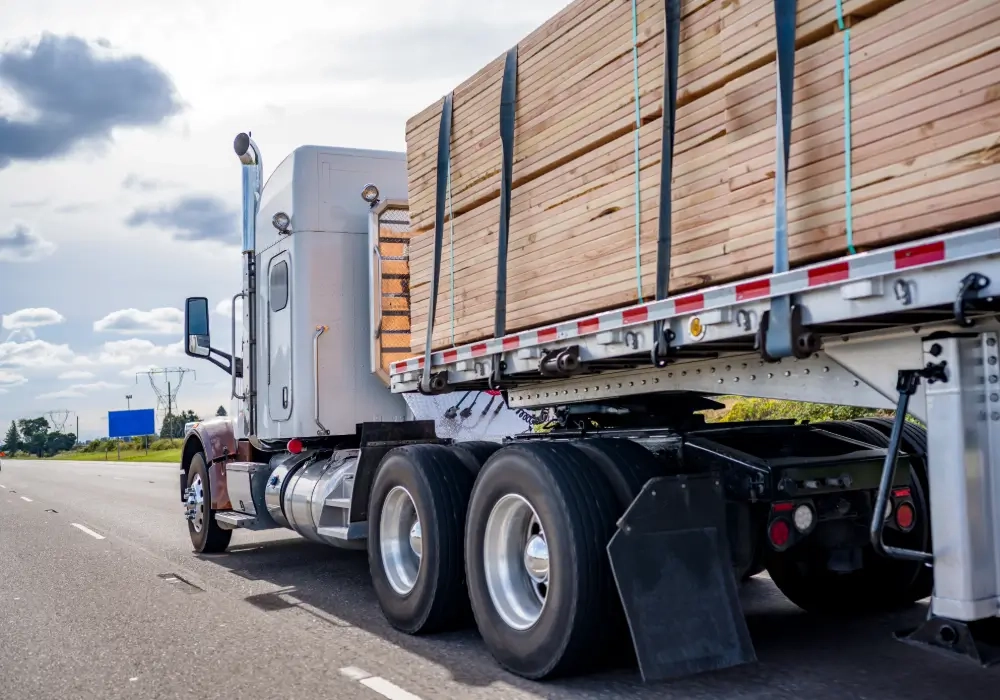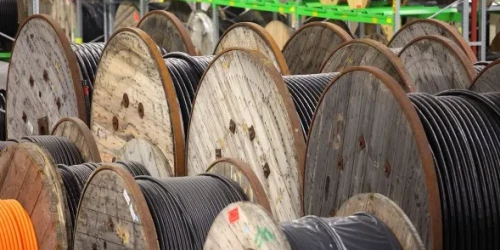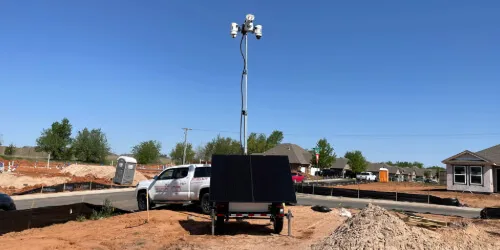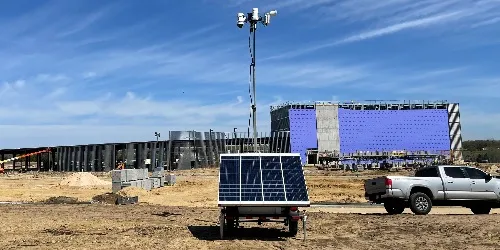As the headaches of construction material supply shortage continues 4-years post-pandemic, what should the construction industry expect in the years to come?
Although metal prices have fluctuated following the pandemic, geopolitical unrest and other national factors threaten to create supply disruption.
In 2024, US steel prices for rebar and wire rod had decreased from its peak in May 2022, however, it was still up by 22% from January 2020.
With increased import tariffs coming in, a reduction in supply to other nations could be seen which may uplift the price of metal and other materials to combat this.
Overall, the future of construction supply material is uncertain as external factors to the industry contribute heavily to the functionality, pricing, and supply of this.
However, with existing research and by utilizing our knowledge within the industry, we look into the future to provide some informed insights into the supply of construction materials.
Understanding the Supply Chain of Construction Materials
Understanding the supply chain of construction materials helps to fully gauge the risks that can be created with them, and the importance of this process of running like a well-oiled machine.
In a fast-moving industry like construction, an effective supply chain is crucial in optimizing timelines, controlling costs, and ensuring project completion is successful.
There are several components to the supply chain of construction materials, and these key elements are as follows:
- Suppliers - A key source of raw materials and components used to produce finished goods for a construction project.
- Manufacturers - Those that transform raw materials into construction-related products and will work with the supplier to ensure the production of products is completed on time.
- Logistics Companies - Helps to transport and store materials from both suppliers and/or manufacturers to the construction jobsite.
- Contractors - The main contractor will be responsible for overseeing the full construction project and supply chain management. This includes acquiring materials, coordinating any subcontractors, and progressing the project in order to reach the deadline.
- Subcontractors - Often contracted to complete specific jobs including plumbing work, electrical work, or roofing, their work contributes to the overall construction project. As their work will involve labor, they rely on the supply of materials to complete their job.
- Engineers - They support the design and planning part of the construction supply chain. When doing this, they will need to ensure materials are both available for the project and can be delivered on time.
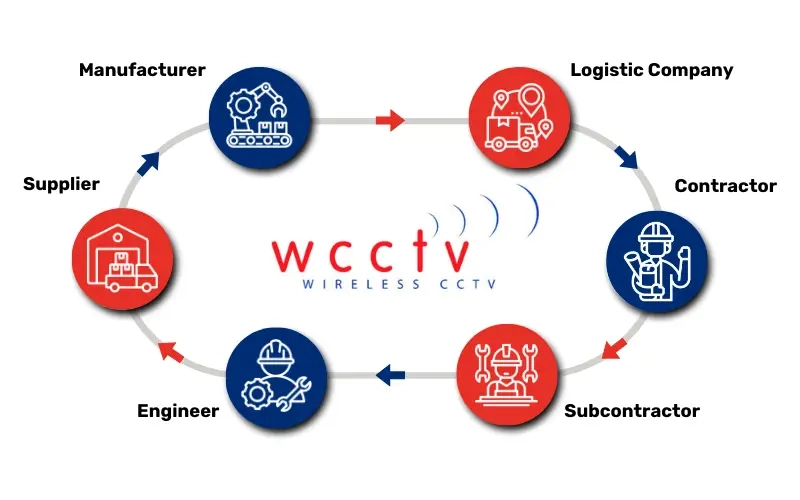
Overall, the supply of construction materials plays a large role in reaching the project within deadline and at the high standard of quality required. Any delays, mis-supply, or loss of materials can lead to projects facing major delays themselves or at worse lead to projects shutting down.
The Current State of Supply for Construction Materials
Ensuring the timely supply of construction materials is vital to maintaining the success of a project, therefore gauging the current state of it helps with understanding the current dangers faced by construction jobsites.
We explore 7 key issues currently being faced by the construction industry and how it is impacting the supply chain now:
A Rise in Metal Theft
Metal theft has become increasingly common as prices continue to drive upwards for many key metal types used within construction jobsite projects. Particularly with copper where industries such as critical infrastructure rely heavily on it.
Due to the high volume of materials, products, and equipment at construction jobsites that have large amounts of metal in, criminals are attracted to this type of environment.
This rise has impacted various construction projects, creating delays and at worst potentially shutting down the project. It can leave construction companies needing to close if repeated incidents occur also.
Geopolitical Conflicts
With the growth in geopolitical conflicts over recent years, there has been a significant impact on the supply chain of construction materials.
All countries will outsource certain materials depending on their own current supply and the actual amount required for projects there. However, when outsourcing is strained due to conflicts such as war, this disrupts that outsourcing process.
There are numerous consequences faced globally with the current state of geopolitical conflicts and construction material supply, and this is as follows:
- Increased shipping costs
- Price fluctuation on materials due to tensions and sanctions
- Transportation delays
- Sourcing disruption and uncertainty
Increase in Natural Disasters
In 2024 alone, there were 27 separate weather or climate disasters that resulted in at least $1 billion of damages.
Natural disasters such as tsunamis, hurricanes, tornados, and earthquakes, all have a disastrous impact on multiple industries and the lives of those within the areas impacted.
Due to the vast size of the US, some States including Texas, California, and Florida often face more natural disasters due to locational factors and other contributing elements.
For construction jobsites based within those States or simply situated in one struck by a natural disaster, they can be destroyed including any materials, leaving nothing left of the project. Unfortunately, no industry is avoided from facing the impacts of such conditions.
Although this construction could begin following an incident, it can take time due to any clean-ups required, damage caused, material availability, and if the funding is still available to continue.
Growth in Demand
Certain metals such as copper, steel, and aluminum have grown in demand within the construction years more recently.
The growth in critical infrastructure projects in particular demands specific metal types and in this rise, demand has spiked.
However, with this growth in demand, there has been difficulty in supply shortage and managing materials efficiently for construction jobsites who require it. This has created backlogs in some cases, creating delays and increased pricing to match the demand for certain construction materials.
Labor Shortages
The US is currently facing a labor shortage which is affecting the construction industry’s ability to reach demand and fulfil projects within their deadlines.
Labor shortages are taking place across various roles, especially with subcontractors and construction workers who will utilize any materials on-site as requested.
If work takes longer, materials or products could be left in plain sight, making construction jobsites like this more vulnerable to theft if materials can be easily stolen.
Manufacturing Delays
Manufacturing is a core stage within the construction material supply chain as those responsible need to convert the raw materials into products for the project as requested. When this faces delays, the whole project faces delays.
Due to demand, many manufacturers have been facing delays as production expectations for them have increased whilst deadlines remain the same.
It’s simple, if one element of the supply chain falters, the rest of the supply chain will be impacted, and this spills over to the construction project’s end result.
Regulatory Compliance
Although necessary for various reasons, regulatory compliance impacts the construction material supply chain.
Frequent changes to stay within health and safety expectations, as well as the additional factors of environmental limits, all can contribute to delays.
If amendments are required materials may not be able to move down the supply chain within schedule. It could even lead to the loss of materials or severe delays if regulations have been broken completely.
What is the Future of Construction Material Supply?
For the survival of any industry, but particularly with construction, you must look into the future to predict any changes or new issues that could impact the success of the industry and your business.
The future of construction material supply may be filled with some uncertainty, however by utilizing our 20-years of expertise in construction site security, we explore what to expect in the future:
Increased Demand For Construction and Distribution Site Security
Within the US, there have been multiple discussions around increased construction developments to support various issues including, the housing crisis which is being felt across many States.
Following the election of Donald Trump, he spoke heavily about boosting housing construction and therefore it is predicted that the number of construction projects will likely increase, as well as the number of distribution sites in line with this.
Although this is uncertain, the likelihood of increased funding will allow for more construction and development work to take place.
However, whilst an increased demand will be financially beneficial for construction jobsites, it also increases the number of targets for criminals to steal construction materials.
Due to the line of work, materials and construction-related products with high metal volume will often stay onsite and just because there may be more construction jobsites in future, does not mean you will be void of becoming a victim of this.
Metal Mining Disruption
Metal mining is central to construction, specifically for those aiming to reach net zero targets. However, with this comes the need for production to rapidly scale up in future to fulfil the expected demand for materials.
With the number of existing mines likely not to sustain the future demand, further mines will need to be created, but this is not a simple task. Due to environmental scrutiny, securing the necessary permissions for new mining projects may be difficult.
Also, fewer high-grade ore deposits for key metals are declining, therefore this could cause supply chain disruption.
Creation of More Sustainable Materials
With the future of metal mining being somewhat unpredictable, it is expected that to fulfil the demand within the construction industry, new, more sustainable materials will be created to support this.
Transitioning to more sustainable material is also being encouraged to help reduce carbon emissions in order for the construction industry in general to achieve a more positive environmental impact.
There are various sustainable materials that the construction industry can utilize in future:
- Graphene - A nanomaterial that is lightweight, but stronger than steel.
- Transparent Wood - A strong, lightweight, and thermally efficient material which can be used as an alternative as glass for windows.
- Self-healing Concrete - A material which can repair cracks on its own. This concrete can be used to extend the life of structures and reduce maintenance costs.
- Bioplastic - Compared to traditional plastic, this is a biodegradable and compostable alternative made from renewable sources including algae, cellulose, and plant starch.
- Cross-laminated Timber - Made from stacked wood planks, this is a sustainable alternative to steel and concrete.
Overall, this transition to sustainable materials and new sources of construction materials will help to relieve pressure on metal mining whilst helping to produce more environmentally friendly projects.
Protect Your Construction Materials With WCCTV
With the future of construction material supply under question, it’s more vital than ever to protect your construction materials from the risks presented to them.
The theft and vandalism of construction materials creates not only heavy financial consequences, but project delays, suspensions, and at times closures, all of which impact the end result of the development work.
There are various security solutions, however, fixed cameras in comparison to mobile cameras are not adaptable and flexible to construction jobsites due to their need for power and internet input.
With our Solar Surveillance Trailers, they work completely independent of your site, both power autonomous and utilizing cellular connectivity to ensure even construction jobsites in the most remote locations can receive high-quality security.
There are many other benefits also, one being that we provide rental options which allows you to fit our security solution to the length of your project. This ensures you receive a cost-effective solution, without skimping on the quality of your security.
To understand how we truly support construction jobsites from construction material theft, watch our cameras in action:
Backed by remote monitoring services, we provide a proactive and reactive security response to security. Our infrared PTZ cameras with zoom-in capabilities and 360 degree view help to deter, detect, and deal with crime in the moment, day to night.
We understand the loss created to businesses from the theft of construction materials, however the future of the industry relies on supply chains all running smoothly, and this increasingly common crime can disrupt that.
To find out how WCCTV can support you in securing your site, speak with one of our Solar Trailer experts today.
